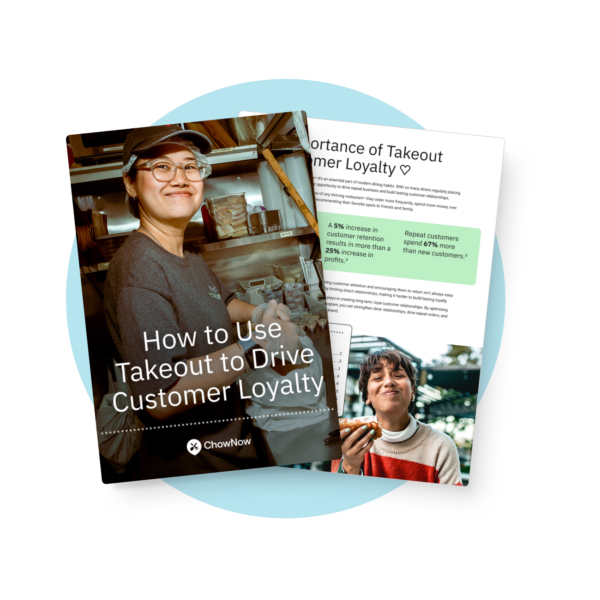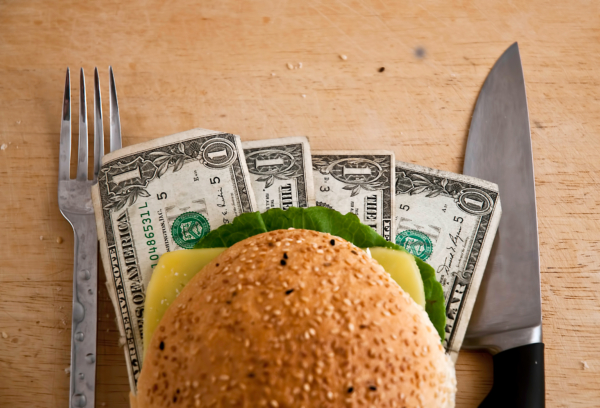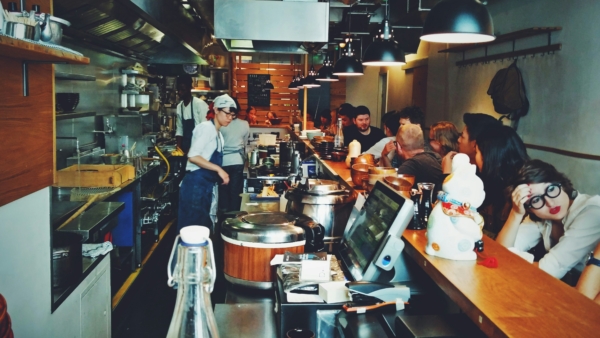How to Calculate and Improve Your Restaurant Food Cost Percentage (Free Calculator Inside)

Every restaurant owner should know their food cost percentage—it’s one of the clearest indicators of whether your restaurant is running effectively or if you’re missing opportunities to optimize your business.
Tracking it correctly will:
- Reveal accurate profit margins
- Help set profitable menu prices
- Flag operational problems
- Support better budgeting
- Help you stay competitive
Yet, despite its importance and the advantages of using it, many operators don’t calculate it regularly or aren’t confident they’re doing it correctly.
This is a problem because without a firm grasp of your food cost percentage, it’s nearly impossible to make informed decisions on pricing, purchasing, and profitability.
In this article, you’ll learn:
- How to calculate your restaurant food cost percentage
- What a healthy food cost percentage looks like
- Practical tips on how to lower food costs without lowering quality
What Is Restaurant Food Cost Percentage?
Food cost percentage is the percentage of your total food sales that goes toward the cost of the ingredients used to make your dishes. It’s calculated by dividing your actual food cost (what you spent on ingredients) by your total food sales, then multiplying by 100 to get a percentage.
We’ll walk through the food cost percentage formula in detail in the next section, but for now, here’s why this number is so important:
- It shows how profitable your menu items really are, not just how popular they seem.
- It flags inefficiencies in your kitchen, purchasing, or inventory management.
- It helps you make smarter decisions about menu prices, promotions, and sourcing.
A high cost percentage might mean your pricing is off, your portions are too large, or you’re paying too much for ingredients.
A low percentage might sound great, but if it’s driving down food quality or hurting the customer experience, it could backfire.
How To Calculate Food Cost Percentage
Calculating your food cost percentage is easier than you might think, and the formula is simple.
Food Cost Percentage Formula

This gives you the actual food cost percentage for a given time period, which is typically checked on a weekly or monthly basis.
Let’s break the formula down step by step:
- Start with your beginning inventory, meaning the dollar value of the food on hand at the start of the period.
- Add any new purchases of food supplies made during that period.
- Subtract your ending inventory, meaning what’s left at the end of the time period.
- That gives you your actual food cost (what you spent).
- Divide that number by your total food sales for the same period.
- Multiply it by 100 to get your food cost percentage
For example, let’s say you’re calculating for a one-week period:
- Beginning inventory = $6,000
- Purchases = $4,000
Ending inventory = $5,000 - Total food sales = $15,000
Your actual food cost = $6,000 + $4,000 – $5,000 = $5,000
Then divide $5,000 by $15,000 = 0.333
Multiply by 100 → 33.3% food cost percentage
Restaurant Food Cost Percentage Calculator
Want to quickly figure out your restaurant’s food cost percentage? Use our free calculator below. Just enter your Beginning Inventory, Purchases, Ending Inventory, and Total Food Sales, and it will show you your food cost percentage.
Watch out for these common mistakes when calculating your food cost percentage
The more accurate your food cost percentage, the more valuable it becomes to your operations. Avoid these mistakes:
- Forgetting to use the same time period for both inventory and sales
- Not consistently and accurately tracking inventory or food waste
- Including non-food items like beverages and operating expenses
- Using total sales instead of just food sales (be sure NOT to include alcohol)
Consistently using the food cost formula helps you stay on top of your margins and spot red flags early.
What’s a Good Food Cost Percentage?
There is no one-size-fits-all answer to what a “good” food cost percentage is, but for most of the restaurant industry, an ideal food cost percentage falls between 28% to 35%.
That being said, these numbers are just a starting point; your actual food cost percentage should reflect your concept, cuisine, pricing strategy, and location.
Here’s how different factors influence your ideal percentage
- Restaurant concept: A fast-casual taco shop tends to run lower food costs and tighter margins, while a steakhouse works with pricier ingredients, but makes up for it with higher menu prices and perceived value.
- Cuisine: Mexican, Italian, and breakfast-focused menus tend to have lower food costs. Sushi, seafood, and steak are significantly more expensive to produce and require careful pricing to stay profitable.
- Location: Rent, labor, and overhead expenses vary wildly by city or region. A small-town diner might hit a 25% food cost percentage, while a city center bistro with high overhead expenses might operate closer to 35% and still be viable.
A higher-than-average food cost percentage isn’t always a red flag, especially if your pricing supports it and your guests perceive high value. The key is balancing quality and profitability in a way that fits your brand.

Tips To Lower Food Cost Without Sacrificing Quality
When strategizing how to lower food costs, the first idea is almost always to swap out current ingredients with something cheaper.
For example, instead of cheddar cheese on the burger, you switch to American cheese. Or, instead of making mayo in-house, you switch to buying it pre-made.
While these alternatives are sometimes necessary, it’s better to exhaust all other options first. When you lower quality, customers notice.
Here are effective ways to reduce your food cost while still delivering an exceptional experience:
Negotiate smarter with suppliers
Build relationships, compare vendors regularly, and don’t be afraid to ask for better pricing or terms.
In some cases, bulk purchasing or partnering with other local operators can help you save money without compromising on quality ingredients.
Cut waste through stricter prep and storage controls
A huge part of lowering food costs is minimizing waste. Tighten your inventory management, train your team on FIFO (first in, first out), and prep in smaller batches if spoilage is a problem.
Even trimming 5% off waste can meaningfully improve your margins.
Retrain your staff on portion control
Inconsistent portion sizes can wreck your food cost calculations. Use standard recipes, pre-portion key ingredients, and teach your kitchen staff how even small over-serves can add up over time.
None of these strategies require cutting quality; they just require paying closer attention to where your money is going and making sure your systems support your goals.
How To Track And Manage Your Food Costs Over Time
Knowing how to calculate food costs is just the first step. The real results come from tracking consistently over time so you can catch problems early and make proactive choices to stay profitable.
Use spreadsheets or inventory software
Whether you’re using a basic spreadsheet or a more robust POS system, the key is consistency.
Track your beginning inventory, purchases, and ending inventory weekly or bi-weekly. The more regularly you do it, the more accurate your insights will be.
Conduct weekly counts and calculate COGS
COGS stands for Cost of Goods Sold—it’s the total dollar amount you spent on food during a specific time period.
Set a recurring schedule for inventory counts, ideally the same day and time each week. After each count, calculate your food cost percentage using your updated COGS and food sales numbers.
Tracking it regularly helps you catch issues like supplier price creep, over-portioning, or seasonal shifts before they become expensive problems.
To learn more about COGS and other KPIs, read our article, Restaurant KPIs Every Operator Should Track (With Easy-to-Use Formulas).
Track waste separately
Not all losses show up in your standard food cost reports. Start logging leftover inventory, spoilage, and prep mistakes separately.
Tracking this gives you insight into where food is going missing and helps pinpoint training or storage issues.
Frequently Asked Questions About Restaurant Food Cost Percentage
What is a healthy food cost percentage for a restaurant?
Most restaurants aim for a food cost percentage between 28% and 35%, depending on their concept, cuisine, and pricing.
Fast-casual spots tend to operate on the lower end, while full-service or fine dining may run higher.
A lower percentage isn’t always better, though—what matters is whether your costs align with your menu prices and operating model.
How often should I calculate food cost percentage?
Weekly is ideal. Frequent tracking gives you better visibility and more control.
Monthly reports are better than nothing, but they can hide short-term issues like spoilage, portioning problems, or sudden supplier price changes.
It might take a little while the first few times you calculate it, but after a few weeks, you’ll find a system that works for you and the process will be easy.
What’s the difference between food cost and prime cost?
Food cost is just what you spend on ingredients. Prime cost includes both food and labor cost—the two biggest expenses in most restaurants. Managing both is key to staying profitable.
How can I tell if my food cost is too high?
Watch for food cost percentages that keep creeping up over time, or margins that shrink even when sales are steady.
High costs could mean waste, theft, poor pricing, or portioning issues. Comparing individual menu items can also help identify what’s dragging you down.
Should I raise menu prices to lower my food cost percentage?
Raising prices can help, but it’s not the only lever. Before increasing menu prices, make sure you’re not losing money to waste, over-portioning, or unnecessary ingredient costs.
Sometimes a small recipe tweak or smarter sourcing can lower your percentage without touching the menu.
Keep More of What You Earn by Managing Costs
Every dollar you keep from better cost control is a dollar that strengthens your business. By tracking your food cost percentage consistently and acting on what you find, you can run leaner, smarter, and more profitably—without compromising on quality.






